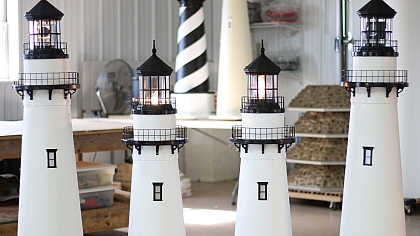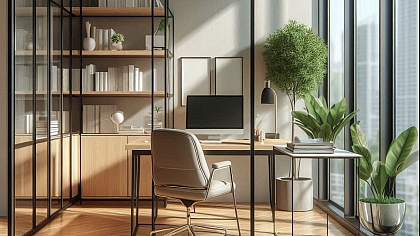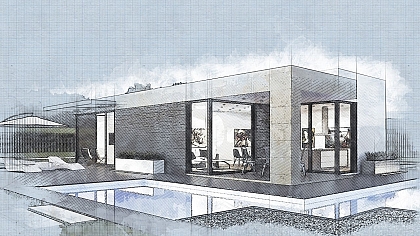
How Built Environments Impact Women's Health
The design of a home influences comfort, aesthetics, and overall health in unexpected ways. Home environments affect hormones, mental well-being, and long-term physical health in subtle but significant ways.
Many modern materials and layouts contribute to various health concerns that disproportionately affect women’s bodies. Some design choices introduce toxins, disrupt sleep patterns, or create hazards that worsen existing conditions.
Small changes in materials, lighting, and layout can improve overall health outcomes for women.
Indoor Air Quality and Hormonal Disruptions
Certain household materials release chemicals that disrupt hormones and affect women's health over time. Women experiencing hormonal fluctuations are particularly vulnerable to these hidden toxins in their surroundings. Common sources of endocrine disruptors include:
- Flooring materials treated with chemicals that interfere with hormonal balance.
- Furniture containing flame retardants linked to reproductive health concerns.
- Air fresheners release volatile compounds that may contribute to hormonal imbalances.
Reducing exposure to these harmful substances helps support overall well-being and long-term health.
WebMD notes that endocrine disruptors block pathways between natural hormones and receptors, interfering with essential bodily functions. Some directly impact glands, triggering excessive or insufficient hormone production, leading to serious metabolic and developmental issues. Others mimic hormones, causing the body to respond inappropriately, increasing risks for infertility, obesity, and thyroid disease.
Long-term exposure to these harmful chemicals has been linked to irregular cycles and certain cancers. Choosing natural materials such as solid wood furniture and organic upholstery reduces chemical exposure. Air purifiers with carbon filters help remove pollutants that interfere with hormonal balance in women.
Do indoor plants help remove endocrine disruptors?
Certain plants, like spider plants and peace lilies, absorb air pollutants that may interfere with hormones. While they don’t eliminate all toxins, they help improve overall indoor air quality. Combining air-purifying plants with proper ventilation enhances the home’s ability to filter out harmful substances.
Risks of Certain Materials in Home Interiors
Some home materials expose women to chemicals linked to brain tumors and other serious health issues. Certain plastics and adhesives contain hormone-disrupting chemicals that mimic synthetic hormones found in birth control.
Women using progestin-based contraceptives like Depo-Provera already face increased risks of developing meningiomas over time.
The Guardian states that a study linked medroxyprogesterone acetate, sold as Depo-Provera, to a 5.6-fold higher meningioma risk. Researchers noted the study was observational but highlighted significant concerns about the contraceptive's safety. The findings add to growing fears about Depo-Provera’s long-term health risks.
According to TruLaw, lawsuits have targeted the manufacturers of Depo-Provera for not properly warning users about risks. Many plaintiffs argue that prolonged use caused neurological complications, including brain tumors requiring invasive surgical procedures. Legal actions emphasize concerns regarding synthetic hormones found in various household materials and their potential dangers.
As awareness grows, more affected individuals may file a Depo-Provera lawsuit to seek compensation for medical expenses and suffering.
It’s also worth noting that long-term exposure to synthetic materials inside homes may contribute to cumulative risks affecting neurological health. Choosing BPA-free plastics and chemical-free furniture reduces potential dangers associated with constant exposure to household toxins.
Why are water-resistant coatings on fabrics concerning?
Some water-repellent treatments on upholstery and carpets contain per- and polyfluoroalkyl substances (PFAS), which accumulate in the body. These chemicals have been associated with immune suppression, fertility issues, and thyroid disease. Selecting untreated fabrics reduces exposure and potential long-term health consequences.
Poor Lighting and Its Impact on Sleep and Mood
Artificial lighting inside homes can significantly disrupt sleep patterns and affect overall mood regulation. Many homes lack natural light exposure, which is essential for maintaining healthy circadian rhythms and energy levels.
As per the Sleep Foundation, circadian rhythms are 24-hour cycles controlling essential functions, including sleep, and rely heavily on light exposure. Artificial lighting and electronics have increased nighttime light exposure, disrupting natural sleep-wake patterns for many individuals. Blue light has the strongest impact, significantly altering circadian rhythms and delaying melatonin production.
Warm lighting in the evening helps the body prepare for restful sleep and mental recovery. Using blackout curtains in bedrooms creates an optimal environment for uninterrupted and restorative sleep.
Does poor lighting affect vitamin D levels?
Limited exposure to natural light can lead to vitamin D deficiencies, affecting bone health and immunity. Women with darker skin tones or those who spend little time outdoors face higher deficiency risks. Spending time in natural sunlight or using vitamin D lamps helps maintain adequate levels.
The Role of Home Design in Bone and Joint Health
Hard flooring and poorly designed furniture contribute to joint pain and osteoporosis risks in aging women. Many homes feature flooring that places excessive stress on the joints and leads to discomfort.
Tile, hardwood, and concrete can increase strain on the lower back and knees with use. Women are already more susceptible to osteoporosis and fractures due to natural hormonal and aging processes.
Mayo Clinic highlights that postmenopausal White and Asian women face the highest osteoporosis risk due to lower bone density. Studies show weight-bearing exercises, calcium-rich diets, and medications help prevent bone loss and fractures effectively.
Research confirms that early intervention strengthens weak bones, reducing fracture risks and improving long-term skeletal health outcomes.
Cushioned flooring and ergonomic furniture provide better support and help prevent long-term musculoskeletal problems. Staircases without proper railings also increase the risk of falls and severe bone injuries.
Why is stair design important for aging women?
Steep or narrow stairs without proper railings increase fall risks, especially for women with osteoporosis. Poorly designed staircases contribute to hip fractures and serious bone injuries in older individuals. Installing handrails and non-slip surfaces improves safety and mobility.
The spaces where women live quietly shape their health in ways often overlooked every day. Design choices influence hormones, sleep quality, and physical well-being, impacting overall health over time. Recognizing these hidden factors shifts the focus beyond personal habits to environmental influences on wellness.
Thoughtful material selection reduces toxin exposure and minimizes long-term health risks inside the home. Proper lighting supports circadian rhythms, improving sleep and hormonal balance for better overall well-being. Ergonomic designs enhance comfort, reducing joint strain and supporting musculoskeletal health throughout life.










